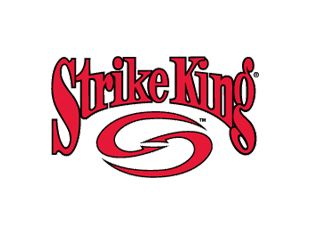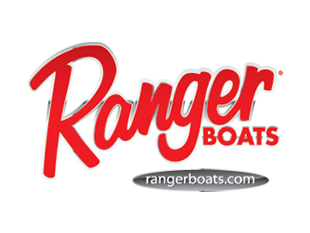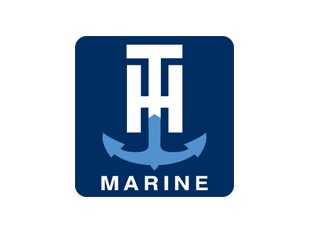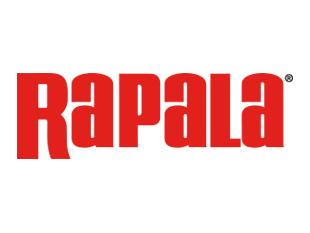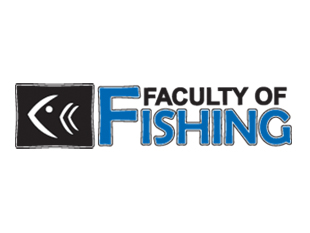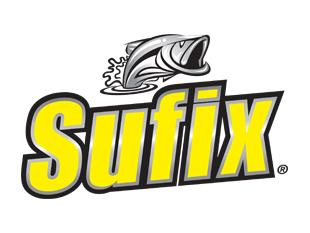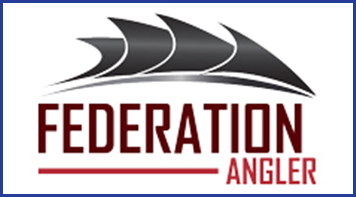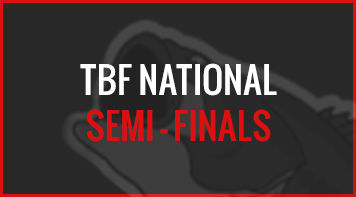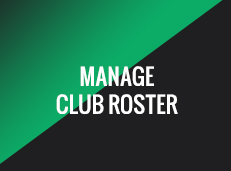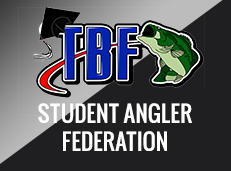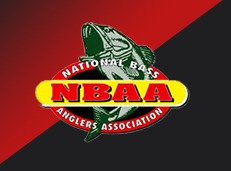Submitted by: Nick Angiulo
 During the week of June 24, 2013, I had the good fortune to experience an opportunity that only a few true “amateur” bass fishermen get: the chance to fish at the yearly BFL (Bass Fishing League) All American tournament run by the FLW, the premier bass fishing organization in the country. This tournament, which has been dubbed by some as the most difficult bass tournament in the world to qualify for, pits the best “weekend warrior” anglers against one another. Most of the participants qualified for the event by fishing in five local BFL events in 2012 and finishing high enough in those events to fish in one of the several regional BFL events where they had to finish in the top six to get a berth at the 2013 All American. The alternate route to the All American, and the one taken by me, was to qualify through The Bass Federation (TBF). That route is arguably even more difficult. For me, it started by fishing in five New Jersey Bass Federation tournaments in 2011 and finishing in second place in the overall standings, which placed me on the 2012 New Jersey Bass Federation’s State Team. From there, the Team fished in the TBF Mid-Atlantic Divisional tournament held in September 2012 on the Potomac River. At that event, I was the second highest finisher from New Jersey, which qualified me as a Co-Angler for the 2013 TBF National Championship. At that event, held in April 2013 at Grand Lake in Oklahoma, I wound up as the top Co-Angler from the Mid-Atlantic Division (and in sixth place overall) which got me a coveted spot as a Co-Angler at the 2013 All American, which this year, was held on June 27, 28 and 29 at Nickajack Lake in Chattanooga, Tennessee.
During the week of June 24, 2013, I had the good fortune to experience an opportunity that only a few true “amateur” bass fishermen get: the chance to fish at the yearly BFL (Bass Fishing League) All American tournament run by the FLW, the premier bass fishing organization in the country. This tournament, which has been dubbed by some as the most difficult bass tournament in the world to qualify for, pits the best “weekend warrior” anglers against one another. Most of the participants qualified for the event by fishing in five local BFL events in 2012 and finishing high enough in those events to fish in one of the several regional BFL events where they had to finish in the top six to get a berth at the 2013 All American. The alternate route to the All American, and the one taken by me, was to qualify through The Bass Federation (TBF). That route is arguably even more difficult. For me, it started by fishing in five New Jersey Bass Federation tournaments in 2011 and finishing in second place in the overall standings, which placed me on the 2012 New Jersey Bass Federation’s State Team. From there, the Team fished in the TBF Mid-Atlantic Divisional tournament held in September 2012 on the Potomac River. At that event, I was the second highest finisher from New Jersey, which qualified me as a Co-Angler for the 2013 TBF National Championship. At that event, held in April 2013 at Grand Lake in Oklahoma, I wound up as the top Co-Angler from the Mid-Atlantic Division (and in sixth place overall) which got me a coveted spot as a Co-Angler at the 2013 All American, which this year, was held on June 27, 28 and 29 at Nickajack Lake in Chattanooga, Tennessee.
My week started on the evening of June 24, 2013, at 6:30 p.m., when, with my car packed, I took off for Chattanooga. Since I had already fished at Nickajack two years ago in the 2011 TBF National Championship, I  had a good feeling that with a few good breaks, I might have a respectable finish. I drove to central Virginia and stopped for the night. The next morning, I drove the remaining six hours and arrived at the hotel, the Marriott in downtown Chattanooga, at 3:00 p.m. After checking in and getting all my equipment into the room, I walked around the hotel a bit and at 4:00 p.m. I went to the pre-tournament registration. There I received my credential and some pretty nice loot (my wife Terri says the proper current term is “swag”). The nicest item was an embroidered full rain suit. After getting back to the room, my roommate for the week arrived. The FLW arranged the rooms, so until that point I did not know who I would be roomed with. As it turned out, my roommate was Ben Wright, from New York, who is the 2013 TBF Co-Angler National Champion since he was victorious at April’s Grand Lake event. While we both fished that event, we hadn’t really previously met. For the next hour or so we talked and quickly hit it off. We both agreed that if we could somehow make it to the final day when only the top 10 get to fish, we would both be more than satisfied.
had a good feeling that with a few good breaks, I might have a respectable finish. I drove to central Virginia and stopped for the night. The next morning, I drove the remaining six hours and arrived at the hotel, the Marriott in downtown Chattanooga, at 3:00 p.m. After checking in and getting all my equipment into the room, I walked around the hotel a bit and at 4:00 p.m. I went to the pre-tournament registration. There I received my credential and some pretty nice loot (my wife Terri says the proper current term is “swag”). The nicest item was an embroidered full rain suit. After getting back to the room, my roommate for the week arrived. The FLW arranged the rooms, so until that point I did not know who I would be roomed with. As it turned out, my roommate was Ben Wright, from New York, who is the 2013 TBF Co-Angler National Champion since he was victorious at April’s Grand Lake event. While we both fished that event, we hadn’t really previously met. For the next hour or so we talked and quickly hit it off. We both agreed that if we could somehow make it to the final day when only the top 10 get to fish, we would both be more than satisfied.
That evening, the FLW threw a banquet and afterward announced the pairings for the practice day and Day 1 of the event. For those days I was to be paired with none other than the reigning TBF Boater National Champion, Mark Daniels, Jr., from California. After the pairings, we talked briefly and I immediately could tell we would have a good time. Mark indicated that he had come to practice for several days prior to the off-limits cutoff and had found several areas with good fish. I then got my tackle together, got on the provided shuttle, and was off to the boatyard to store my equipment. For those of you who are unaware, the FLW provides the boats for this event, similarly equipped 2013 Ranger Z520c boats.
Wednesday, June 26, 4:20 a.m. . . . time to get up and start the experience. I arrive at the boatyard at 5:00 a.m. where FLW staff greeted us with breakfast sandwiches and coffee as well as sandwiches and snacks for us to  have in the boat. More FLW staff then proceeded to drive us to the ramp and launch us. The ramp is located on the upper end of Nickajack Lake. As background, Nickajack is actually a lower section of the Tennessee River than has been dammed. To its north is Lake Chickamauga and to its south, in Alabama, is Lake Guntersville. The first 30 miles or so of the lake is really the river itself and is narrow and twisting with ample amounts of current, which widely fluctuates when the Tennessee Valley Authority (TVA) needs to generate power. It’s that current that is the key to fishing at the lake. After launching, we make our way to the blast off site several miles away and anxiously wait for 7:00 a.m., along with the 48 other Boaters and 48 other Co-Anglers. Daniel Fennell, the Tournament Director launches us on time and as boat eight that day we are off early. Mark told me he wanted to explore some new areas and did not want to fish the better spots he found in pre-practice. That made sense to me. So, on the day, we ran the entire lake from dam to dam (about 40 miles), looking for other areas that might produce if Mark’s main areas were not. We had a moderately successful day, boating about 15 bass, but only six keeper-sized fish between the two of us. Mark was not concerned as he indicated that on tournament day we would be fishing where he found larger collections of fish in pre-practice. I was confident we would do well on Day 1, and I was especially happy that I was catching fish on a Texas rigged Zoom Baby Brush Hog (my favorite) and a finesse worm thrown on a drop shot.
have in the boat. More FLW staff then proceeded to drive us to the ramp and launch us. The ramp is located on the upper end of Nickajack Lake. As background, Nickajack is actually a lower section of the Tennessee River than has been dammed. To its north is Lake Chickamauga and to its south, in Alabama, is Lake Guntersville. The first 30 miles or so of the lake is really the river itself and is narrow and twisting with ample amounts of current, which widely fluctuates when the Tennessee Valley Authority (TVA) needs to generate power. It’s that current that is the key to fishing at the lake. After launching, we make our way to the blast off site several miles away and anxiously wait for 7:00 a.m., along with the 48 other Boaters and 48 other Co-Anglers. Daniel Fennell, the Tournament Director launches us on time and as boat eight that day we are off early. Mark told me he wanted to explore some new areas and did not want to fish the better spots he found in pre-practice. That made sense to me. So, on the day, we ran the entire lake from dam to dam (about 40 miles), looking for other areas that might produce if Mark’s main areas were not. We had a moderately successful day, boating about 15 bass, but only six keeper-sized fish between the two of us. Mark was not concerned as he indicated that on tournament day we would be fishing where he found larger collections of fish in pre-practice. I was confident we would do well on Day 1, and I was especially happy that I was catching fish on a Texas rigged Zoom Baby Brush Hog (my favorite) and a finesse worm thrown on a drop shot.
Thursday, June 27, 4:20 a.m. . . . TIME TO GET UP AND FISH IN THE BFL ALL-AMERICAN!! The morning process described above repeats itself and at 7:00 a.m. under warm, overcast and breezy conditions we wait for Daniel Fennell to call out boat eight. And we are off!! Mark told me earlier we would be heading about 35 miles into the actual lake section to fish. We arrive at our first spot. Mark indicated that it was loaded with fish in pre-practice. After one-half hour without a bite and watching another tournament boat nearby catch at least 10 keepers, we move a short way further into the bay. We are fishing offshore rock structure in about 10 feet of water and are not getting bites. We move again to a nearby roadbed and we both start catching fish, which are unfortunately less than the required 15 inch limit for largemouth bass. Finally, at 9:00 a.m., I boat a 16 inch keeper. With that pressure off, we keep fishing in that location. Mark then connects with a fish of similar size, but he is not satisfied with the disposition of these deep fish. He indicates that he wants to switch gears and head to shallower water since the weather is still overcast. We move across the lake into a smaller, shallower bay with numerous laydowns. Mark picks up a shallow crankbait and immediately starts to catch fish. I start throwing a crankbait as well. After several shorts, Mark catches four moderately sized keepers in the next hour. I add in one nice 2.75 pound keeper and lose a similarly sized fish at the boat. We then move further up lake to a similar area. The shallows there only produce shorts. We make a short move to where Mark indicates he found a high spot of rocks offshore in about 10 feet of water. We find the spot and he throws a marker buoy. It’s around 1:15 p.m. and I have two keepers. We have to leave to at 2:15 p.m. to get back for the 3:00 p.m. check-in. Mark catches two good fish to make significant culls. I add a third keeper around 16 inches on the drop shot. I then catch another 16 incher. Mark sticks a good 3.50 pounder at 2:00 p.m. I have about 10 minutes left and need one more fish. At 2:12 p.m. I set the hook into my biggest fish of the day, a solid 3.00 pounder. Then its full bore back to the weigh-in. When my fish hit the scales, the weight of 11 pounds 13 ounces pops up. I’m elated, my late day flurry put in in sixth place in the Co-Angler Division after Day 1. Mark’s limit weighed 12 pounds 7 ounces, and he was in 23RD place in the Boater Division after Day 1. Mark proved to be a true gentleman and we had two productive and fun days on the water together. He is an excellent ambassador for the TBF at I’m sure he will be a great representative of the organization at this year’s Forrest Wood Cup and on the FLW Tour next year.
After the weigh-in, I find my Day 2 Boater, Kerry Milner from Arkansas. Kerry weighed in 18 pounds and was in sixth on the Boater side. He had two giant fish on Day 1 and some squeakers. Coincidentally, he fished with Ben Wright on Day 1 and both he and Ben told me that the area he caught the big fish in was loaded with giants. Ben caught one fish over five pounds and a solid three pounder, but only had one other very small fish. However, he told me that he lost a few. I am immediately excited, but a bit apprehensive since Kerry indicates we would be fishing near the upper dam in swift water, completely different from the way I fished in practice and on Day 1. So, I re-rigged my rods to include a Carolina rig, a one-half ounce Texas rig and a one-half ounce drop shot.
Friday, June 28, 4:20 a.m. . . . time to make the donuts . . . . On the ride to the ramp, Kerry tells me he is hopeful that the current will be strong and that the TVA will be pulling water, since that current, and the riffles and eddies it will create will be the key to our day. We get to the blast off area and wait. Today we are near the end of the second flight and wait for 40 or so boats to launch before us. It’s partly cloudy and warm with just a slight breeze. Our number is up and we make the short five minute run to Kerry’s spot. It is about 300 yards below the dam and is a long riprap point where the river current flows quickly past the outside of the riprap, but the water on the inside is calmer. I also quickly realize that the area is bigger than one would think. It’s easily the size of a football field and the bottom composition includes big rock as well as chunk rock. There are also large barge moorings nearby to break the current. Kerry told me that he was contacted by a cameraman the evening before, so we expected some coverage, but no camera boat was with us first thing in the morning. Boy did they miss a show!! On Kerry’s second cast with a large football head jig, he lays into a giant. Once in the boat we see it’s near six pounds. That’s the way to start a day!! Ten minutes later Kerry smokes a three pounder and loses a similar sized fish. I decide to participate. Five minutes later I feel my one-half ounce Picasso tungsten weight go slack. I reel down and set hard. Kerry is ready with the net and my first fish, a solid 5.50 pounder is in the boat. Next thing we know, Kerry boats another fish over three pounds. Shortly after, I set the hook into another big fish, this one pushing 4.50 pounds. Kerry then picks up a big swimbait and boats a 19 inch smallmouth. At 9:00 a.m., I’m feeling pretty good with two fish for about 10 pounds! The bite slows and at 9:15 a.m., the camera boat shows up. For about two hours we are in the dead zone. Kerry states that the day before, he had a similar drought but the bite picked up in the afternoon. With that, the camera boat leaves indicating he will come back later on. Between 11:00 a.m. and 1:00 p.m. Kerry catches a couple of shorts and I catch a 16 inch largemouth and a 13 inch spotted bass (the size limit for spots is only 12 inches). Five minutes before the camera boat comes back, Kerry lays into a four pounder. The camera man is back, and so is the drought, although I catch a short while he’s there. It 2:15 p.m. and the cameraman says he needs to leave to prepare for the weigh-in. Ten minutes after he leaves I catch my fifth keeper, a 13 inch spot. It’s not much, but it made five! Kerry tells me that he’s sure I will be leading the Co-Angler Division after Day 2. He also said he hoped he would be leading the Boater Division, so then we would both be right back together for Day 3 in the same boat on the same spot. I hoped the same thing! At the weigh-in, Kerry weighs in before me. His limit is an impressive 19 pounds, 4 ounces, placing him second. I was one of the last to weigh. I needed 13 pounds 13 ounces to take the lead in my Division. The weight came up on the screen as 14 pounds even. I AM LEADING THE BFL ALL AMERICAN. Is this really happening??
The weigh in is concluded and only the top 10 Boaters and top 10 Co-Anglers get to fish on Saturday. I already knew where I stood, but was hopeful that Ben would also make it. I knew that Ben had four fish on the day and would be very close. When Daniel Fennell started announcing the pairings, he started at the top. I would be paired with Chris Wilkinson from Indiana, who led Kerry by almost two and one-half pounds. While I was thrilled to fish with the leader, I was a bit disappointed not to be paired again with Kerry since I was familiar with where he would be, what to throw there and was confident that he would still be able to catch plenty of big fish. Finally, the 10TH place Co-Angler is announced, it’s Ben Wright. Also, Chad Richardson, from Wisconsin makes the top 10 in the Co-Angler Division. He also qualified from the TBF National Championship. Only seven Co-Anglers made it to the All American from the TBF National Championship and three of us are in the top 10!! Not too shabby! I briefly talk to Chris and he states that we will be fishing in the river section, running from spot to spot. I am a bit concerned that my opportunities will be limited but am comforted by the fact that Chris is clearly on not only large numbers of fish, but also big ones.
That night, over our celebratory Subway dinner, Ben and I discuss how amazing it is that we both get to fish the final day. Also to my surprise is the fact that I was not nervous or concerned about the following day. Never having been in such a position in such a big event should have had me quite jittery. But I was the exact opposite. I guess I’ve been at this game long enough now to know that anything can happen and all I can do is go out and give it my all. I actually slept quite well that night. It apparently wasn’t really sinking in that I was less than 24 hours from potentially winning the $50,000 Co-Angler first place prize!
Saturday, June 29, 4:20 a.m., Ben and I get up and get ready. At 4:55 a.m., Daniel Fennell calls Ben wondering where we are (we are in his truck on the way to the boatyard). I guess he thought we were not going to show?? I’m pretty sure we would not have missed it for the world! At the boatyard, Chris and I are shuttled to the ramp, launch and ride to the blast off area. There are various cameramen and boats, FLW media staff and many family and friends of the contestants waiting for the launch. It seems like a long wait for 7:00 a.m. but I pass some of the time re-rigging my rods. Chris told me the main pattern would be to run various river spots where barge moorings were near the banks and created current breaks. He said he had several of these spots and any one of them had the potential to produce both numbers and size. We meet out cameraman for the day, Gilbert, who would be in the boat with us all day, and his camera boat would be following us. We are both a bit anxious and had no inkling of some of the adversity we would be facing in the next few hours.
It’s 7:00 a.m. and we are boat number one. The weather is beautiful with moderate temperatures and little wind. We idle thorough the no wake zone and make a very short run to a riprap shoreline. Chris said he had caught a few solid fish here on Thursday on topwaters in the overcast conditions. After 10 minutes with no bites we move two miles upriver to a series of barge moorings. Chris indicated that the previous day, this spot was loaded. He is throwing mainly a seven inch green pumpkin blue Texas rigged ribbon tail worm. After 10 minutes, he connects with a fish, it’s not big, but it hits the 15 inch mark. I am alternately throwing my Texas rigged brush hog and the drop shot. I catch two very, very short bass there. After about an hour, we move back downriver a bit, just below the blast off area. Once there, Chris catches another 15 incher. I catch a few more little babies. We move directly across the river along a riprap bank. I finally get a keeper, it’s a giant 12 inch spotted bass. I’m happy to get the skunk out, but know that sized fish won’t do it for me. A short time later, I connect with a 15.25 inch largemouth and a 13.5 inch spotted bass. By 9:30 a.m. neither of us can connect with any more keepers and Chris states that these areas would be better in the afternoon when the sun gets higher. With that, he indicates that we would make a run about 20 miles downriver to some shallower spots and come back to these areas later. A reasonable plan. What happens over the next four hours can best be described as the plotline for a “Twilight Zone” episode.
About 15 miles into our run, in the middle of the channel, running about 65 mph, the boat lurches and begins to slow. Knowing we did not hit anything, I am concerned that we had blown the engine. We slow to a stop and Chris trims the engine up. To our amazement, not only is the prop gone, but so is the prop shaft!! Time to improvise. Chris calls Daniel Fennell and asks if we can switch to the camera boat. After getting permission, we switch everything over in about 15 minutes, including our fish. Fortunately, we are within sight of a ramp so our original boat is taken under trolling motor power there by the camera boat driver to be picked up by FLW staff. We then run a bit further and proceed to fish some shallow water areas with docks and laydowns without success. At the last location, however, Chris does connect with a 16 inch keeper. We move a bit upriver and fish a small cut off the river. Upon entering, I notice water pumping out of the bilge, or so I thought. After a few minutes of the water still pumping, I open the livewell, it’s bone dry and our fish are in serious distress. Panic is quickly setting in. We are initially unable to figure out the issue and proceed to run the boat in reverse to refill the livewell. Chris also calls back Daniel and tells him about our problems. During this time, I throw my drop shot out and look away as I am trying to help Chris with the livewell. I look back and my line is 10 feet from where it began. I frantically reel the slack and set the hook. The drag strips for two second and the fish is gone . . . . On the way out of the cut, Chris connects with a big fish, pushing 4.50 pounds. We move further upriver, still with the livewell not fully holding water as we have to continue to run the boat in reverse to fill it. Additionally, the pumps are now not even pumping water in at all. At the back of one area I set the hook into what feels like a solid fish on the brush hog. I get it into the boat and it’s a fat largemouth. It looks like a keeper but on the ruler I can’t stretch it more than 14 and 7/8 of an inch. Five minutes later Chris boats a 16 incher and 15 minutes after that another. I catch a small largemouth.
It’s noon and Chris wants to return to the barge mooring pattern. We run back upriver 15 miles and pull up on one of the spots. Chris is on the phone with Daniel and we are told that we need to return to the blast off site to see if the livewell can be repaired. While on the phone, Chris sets the hook into a slob. I am quick with the net and the near 6 pounder is in the boat. The hook drops out of its mouth as I bring it into the boat. Five minutes later I score my fourth keeper, a 14 inch spotted bass. We return to the blast off spot and after 10 minutes, the technician is unable to get the livewell to run at full capacity. Daniel tells Chris that he will get another boat out to us. To help facilitate the change, we motor up closer to the ramp and fish another barge mooring area where Chris culls a fish. I am continuing to catch shorts and am getting somewhat desperate to catch a fifth keeper. The boat arrives and the Chinese fire drill of boat switching occurs again. This time we did it in probably less than five minutes. It’s about 2:00 p.m. and check in is at 4:00 p.m. The remainder of the day we work as hard as we can and hit as many spots as we can but I cannot catch my fifth fish and Chris catches one more fish that upgrades his bag a few ounces. But that’s it.
The final day weigh in was to take place in Dayton, Tennessee, about 40 minutes from where we fished. It would be after the FLW Tour’s Day 3 weigh-in of the professionals for the Lake Chickamauga event. In the truck on the way, I knew I only had around five pounds of fish and would in all likelihood not be the winner. I was still hopeful that I could finish in the top five. FLW staff ensured that we did not disclose our catches to the other participants so we were all in the dark as to the final result. While riding to the weigh in, Chris and I figured he had somewhere in the 17 pound range. He was cautiously optimistic that he had enough to win it, since that would mean that his closest competitor, Kerry, would need somewhere between 19 and 20 pounds. He asked me if I thought that Kerry could have that weight. I said I knew he was around enough big fish to get that weight, but that it would be difficult since his Co-Angler would presumably also be catching some of his fish. At the weigh in, the Co-Anglers are first and weighed in in reverse order. That meant that Ben was first. He weighed in three fish for 6 pounds 13 ounces. The ninth place Co-Angler had a tougher day, so Ben moved up one slot. Standing in line at that point, I was beginning to wonder if any Co-Angler had a good day. My question was answered as two of the next three Co-Anglers brought good bags to the scales, including Daniel Buswell’s tournament best Co-Angler weight of 15 pounds 1 ounce, for a three day total of 36 pounds. At that point I knew it was over for me . . . but could I stay in the top five?
Finally, I am on stage with emcee Chris Jones. Before I weigh in, he gives me the opportunity to speak. I take the opportunity. Rather than reproduce what I said, I will save that for the end of this piece. Daniel Buswell is also on stage and he appears a bit concerned once he hears I have four fish since, if they were all largemouth, there was a chance that I could have weighed more than the 10 pounds 3 ounces I needed for the win. Of course, when the scale registered my weight of 4 pounds 14 ounces, Daniel was the Co-Angler champion. He certainly earned it bringing in that big limit on the last day. I wish him the best of luck at the Forrest Wood Cup. I finish in fifth place. I am happy, but do lament the barely short largemouth that would have moved me into third place. I also know that I did everything I could on the last day but just did not get the bigger fish to bite. Chris gave me every opportunity to succeed on the day, despite some of our non-fishing distractions that were beyond both of our control. It just did not happen.
As it turns out, it just did not happen for Chris either. Things looked good for him until Kerry took the stage. When Kerry’s weight was announced, there was no doubt who the winner would be. Kerry brought an incomprehensible 25 pounds 12 ounces to the scale; a weight more than five pounds larger than any other limit caught in the entire tournament. As on Day 2 when I fished with him, he stated that he caught most of them in the first hour. Chris waited in the wings to weigh in while Kerry was interviewed on stage. That must have been a sickening feeling. When Chris weighed in 17 pounds 10 ounces, Kerry was the 2013 BFL All American champion. After all the festivities, I congratulated Kerry. He is a really great guy and earned his win. Since I had fished with both Kerry and Chris, I was in an odd position. While I was elated for Kerry, I was heartbroken for Chris. After the day Chris and I had on the water, and the issues we overcame, it seemed almost cruel that the fish gods did not reward him. I tried to console him by stating that he did absolutely nothing to lose the event. Even though I only was with him for one day, I could tell that while it will hurt for a while, Chris will come out of this stronger and better. With that said, I hope Kerry goes out there and flat out wins the Forrest Wood Cup. It’s on another river system, so who knows . . . . In any event, I know I will be following him closely.
To say my 2013 BFL All American experience was a once in a lifetime opportunity is probably accurate. The odds of me ever qualifying again seem pretty remote. If I never make it back, at least I know that I did everything in my power to do the best I could and seized the opportunity. I also hope that I presented myself as a worthy representative of the New Jersey Bass Federation and the TBF. I will always treasure the time I spent at the All American and the numerous individuals I met and fished with. I made several new fishing friends and I will keep in touch with them moving forward.
Now for the thank yous. Initially, I want to thank the FLW, and especially Daniel Fennell and all of the FLW staff for all of their incredibly hard work in making sure that this event was the best it could be. Until I went to this event, the biggest events that I had fished in were four TBF Divisional Championships and three TBF National Championships. Those events were all first class. However, I can truly say that the All American was at a different level. I would also like to thank the TBF and FLW for even affording someone like me the opportunity to have a taste of what it is like to fish at the highest level. Additionally, without the support of both the New Jersey Bass Federation and my club, the Big D Valley Bassmasters, none of what I achieved at the All American would have been possible. In that regard, I am humbled by the number of well wishes I received from members of both organizations before, during and after the event. I would also be remiss if I did not thank my sponsor, Picasso Lures. I am convinced that its tungsten drop shot and worm weights were essential to me in this event and helped me detect the very subtle bites. Last, and most importantly, I want to thank the love of my life, my wife Terri. I can’t imagine a more supportive partner in my crazy bass fishing endeavors.
Those who heard me on stage on Day 3, might know what’s coming next. I would like to dedicate my participation in this event to two great men: My Dad, Nick, who lost his battle with cancer in August 2012; and my Father-in-Law, August, who passed away in June 2013. My Dad not only taught me how to fish, but he also instilled his love of fishing in me. He also shaped me into the man I am today. My respect for my Father-in-Law runs deep. While not a fisherman, he was an avid birder and outdoorsman. He also showed, with quiet dignity and class, the right way to live your life. I will miss them both.
In parting, I want to encourage all you weekend anglers who aspire to bigger things to look at me as an example of what can be. Go out there and chase your dreams, they may just come true. Competitive fishing is a great sport; it promotes friendship, camaraderie and sportsmanship. And, while, as the title of this piece says, I was “so near and yet so far” from winning the event, the result was not nearly as important as the journey.
Tight lines to all.
Nick Angiulo
Big D Valley Bassmasters
New Jersey Bass Federation








